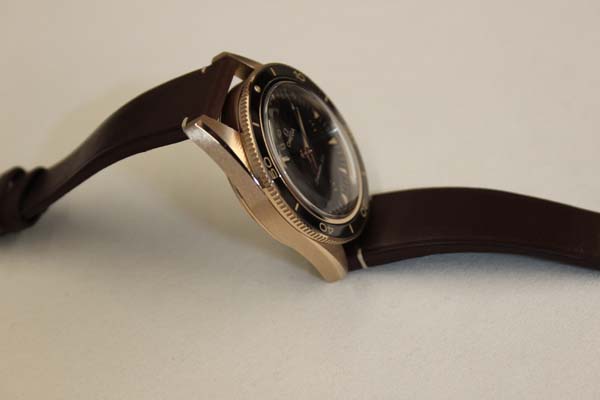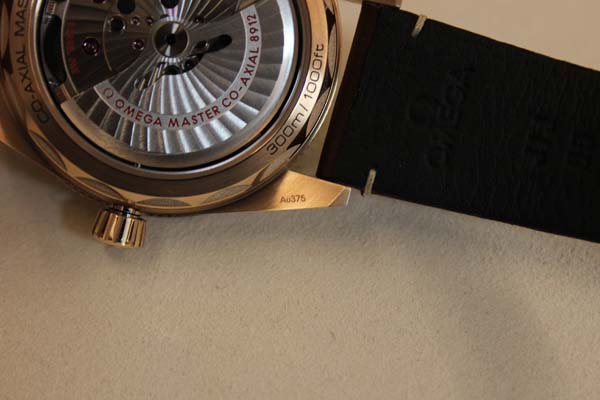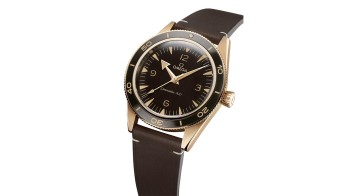Bonze used to be a simple matter. A lot of copper, some tin and there it was. Then watchmaking took an interest and it all became complicated. It requires alloys with specifications making it compatible with being worn on the wrist. Which is acid, humid, and demands cleanliness.
These sophisticated formulas came with another caveat : how far is this metal going to stray from its original colour. Bronze gains a patina over time, which goes as far as becoming green, or black, and which generates irritating agent against the skin. So manufacturers resorted to adding stabilising metals such as aluminium, which puts a cap on oxydization. And to using casebacks made of stainless ones, i.e. steel and titanium.
These were the facts before Omega decided to create a new alloy they call Bronze Gold (with caps). It's not bronze, but an alloy containing 37.5% pure gold, plus some silver, some palladium and a whole lot of copper. Which makes it actual 9ct gold, and it comes with its specific hallmark. Its not fine enough to earn it the right to be called « gold » as such. But it's enough for its colour to remain stable over time. And that colour is the same as bronze.

See, that's the thing with bronze. It's not light yellow like yellow gold, not pinkish like rose gold or red gold, nor is it grey or black. It's its own shade of dark, warm yellow, and it absolutely does not feel precious. That's what made its success. Not its association with the sea (which is remote). Not the patina (or maybe just a little). Not fashion (although...)
So the Omega Seamaster 300 Bronze Gold is...very bronze. But that's not the real issue actually. What really matters for this type of watch is : what will it look like in 3,6 or even 24 months. When you see a bronze piece in a window and try it on, what you see is what you get, no doubt about it. The case, the dial and the bezel ring all look like they belong with one another. It's good design, like any other timepiece.

Then you wear it and the case starts shifting and that balance goes down the drain. Have you seen one of these timepieces with dirtyish, dark, uneven cases ? They clash with the rest that's remained clean as a whistle ! At that point you either go with it or start cleaning. The advantage of Bronze Gold is its ability to remain the same. The watch will retain its design integrity over time.
But there's a but. The Seamaster 300 Bronze Gold is 88% more expensive than its steel equivalent. That's stiff. At that point, you either choose to see the glass half full and remember it's made of (a little bit of) gold, or you choose to go with the bronze story. And in that case, that's a lot of money just to get to keep your watch looking like when you got it...which is what we've all become rightfully used to.







